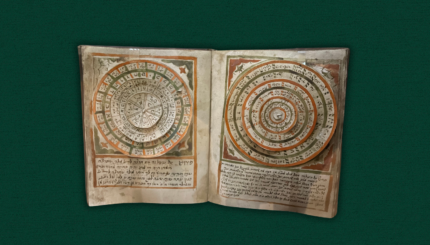Excerpted
with permission of the author from
The Jewish Way: Living the Holidays
.
Ideally, a commemoration should reach out and bring Jews of every background together. In the Holocaust, there are no differences between religious or secular, assimilated or committed Jews. The unity of Jewish destiny should be a given in all remembrances
Any Holocaust liturgy should avoid total affirmation or resolution. This tragedy, too destructive to be overcome lightly or swiftly, poses radical questions to all humanity. Nor should the mood be one of total defeat and despair; that would not do justice either to those who remained faithful even in the moments of greatest agony or to the incredible renewal of life that survivors exhibited after the war.
Which Prayers?
In light of the inability to express the inexpressible, prayers preferably should be taken from the actual writings and testimony of those who went through the Holocaust. Similarly, most commemorations incorporate music from the camps and ghettoes. The various languages of the Jewish people also should be included. One must fight Hitler by refusing to yield cultural heritage to destruction.
With your help, My Jewish Learning can provide endless opportunities for learning, connection and discovery.
A service should conclude with the traditional mourners’ prayer, the Kaddish. Traditionally, when someone dies without leaving immediate family, the nearest relative recites the Kaddish. For millions in the Holocaust, the entire family, with all its branches, was wiped out; now Jews are the nearest living relatives; the entire congregation can appropriately join in saying Kaddish.
For those who have religious or other reservations, however, the alternative is that the entire group stand together while some recite the words. Those who feel they should not recite the Kaddish should stand in silence, which, after all, may be the only authentic liturgical response to the Holocaust.
Candles
The single most widespread ritual observance is the lighting of memorial candles for the six million. This practice is well-nigh universal. Candles have a long history as memorial lights and as symbols of life. In a day that started with no inherited form, how powerful is the religious spirit that instantly picked out a symbol so totally rooted in tradition yet so contemporary.
In most ceremonies, six candles are lit, one for each million. Survivors, when present, are asked to do the lighting. In some communities, seven candles are lit, thereby linking up to the ancient menorah symbolism.
Non-Jews in the Shoah and Holocaust Commemorations
The seventh candle has been designated differently in various communities. Some have honored righteous Gentiles who died in the Shoah trying to help Jews; some paid tribute to the righteous Gentiles whether or not they died; some have lit the light in memory of non-Jewish victims (for example, gypsies and Poles killed in Auschwitz). Inclusion of non-Jewish victims has been criticized as a dilution of the Jewish character of the Holocaust, an attempt to evade the uniqueness of the Nazis’ demonic decision to wipe out every last Jew.
The critics point out that mass killings of other groups were connected to “rational” objectives (killing of political opposition, annihilation of Russian POWs, genocide of Polish intelligentsia). In this view, the evil of such crimes should not be mitigated, but they should not be lumped together with the “final solution” of the Jewish problem, whose total nature defied logic, economic advantage, and even military need.
The matter is complicated and highly emotional. There is a danger of so stressing the uniqueness of the Holocaust that it is turned into a solipsistic event with no consequences or meanings for others. Excess in interpretation can even turn talk of the Shoah into a covert claim of superiority (I suffer, therefore I am better than you). On balance, legitimate use of analogies and comparisons to other events is possible, although the distinctions must be kept clear, perhaps even underscored, at such moments.
Kaddish
Pronounced: KAH-dish, Origin: Hebrew, usually referring to the Mourner's Kaddish, the Jewish prayer recited in memory of the dead.
menorah
Pronounced: muh-NOHR-uh, Origin: Hebrew, a lamp or candelabra, often used to refer to the Hanukkah menorah, or Hanukkiah.
Shoah
Pronounced: SHO-uh (long o), Origin: Hebrew, the Holocaust.


